The waterside setting at The Thimble Islands Bed and Breakfast is the perfect place to unwind. In Stony Creek, just beyond New Haven, the tide comes and goes, the seabirds wheel and turn, and the rhythm of the day seems to slow down. You take it all in from the art-filled house and beautifully maintained grounds.
But the best reason to visit may be for the breakfast.
Tony Broom, who shares the innkeeping duties with his wife Julie, is an expert at old-school scrambled eggs. So much so that radio personality Faith Middleton, host of the Food Schmooze and a frequent guest at the inn, invited him onto her show to describe his process.
For tender eggs — scrambled, fried, or otherwise — low temperature is the key, according to Tony. High heat toughens the whites and can turn the yolks into dry cakey blobs. Surprisingly, not everyone in the culinary world agrees on this, but trust me, he’s right.
Tony insists that slow cooking over low heat is the only way to get fluffy, moist, and tender eggs. But that’s not where his meticulous process starts.
Broom is lucky to live near Medlyn’s Farms, his almost-daily stop for just-laid eggs. Right off the bat, you can tell that their bright yolks and firm whites are going to make a pretty spectacular scramble.
 After the eggs are cracked, they’re thrashed with an electric hand-mixer to a smooth and streak-free consistency. No lumps of white are allowed to sully the bright mixture. The eggs then rest at the side of the stove to come to room temperature. Salt, and a little butter or cream are added before cooking.
After the eggs are cracked, they’re thrashed with an electric hand-mixer to a smooth and streak-free consistency. No lumps of white are allowed to sully the bright mixture. The eggs then rest at the side of the stove to come to room temperature. Salt, and a little butter or cream are added before cooking.
When the Inn guests gather for breakfast, Tony sets his non-stick skillet over low heat and drops in a knob of butter. The butter melts un-attended and may even brown. “That’s OK,” Tony said. “It adds a little more flavor.”
While the guests enjoy their first course of elegantly presented fruit, the eggs are slipped into the pan and allowed to gently warm.
 After a minute to get over the shock of the heat, the eggs are gently but persistently moved around the pan with a rubber spatula. Stirring is too strong a term, but constant motion is the secret to nurturing small curds and a light texture.
After a minute to get over the shock of the heat, the eggs are gently but persistently moved around the pan with a rubber spatula. Stirring is too strong a term, but constant motion is the secret to nurturing small curds and a light texture.
Finally the eggs begin to coagulate, just firm enough with small barely-discernible curds. Turned out on a platter and garnished with a dash of paprika and slices of crisp bacon, the tender and evenly cooked eggs are moist, glossy, and bright.
You can hear Tony’s first-hand account of scrambling on Faith’s show at foodschmooze.org.
Many chefs agree that low and slow gives the best results with eggs. Cooked in a hot pan they can be browned with tough whites and hard yolks.
Further up the Connecticut coast in Madison, Master Chef Jacques Pepin, for one, agrees with Tony’s approach to cooking eggs. He applies the low and slow technique to fried eggs. To make what the French call “EggsMiroir” he drops a knob of butter into a warm non-stick skillet and slips in a couple eggs. After adding a dash of water, he covers the pan for undisturbed slow cooking. You can hardly call it fried.
When the eggs are done, the steam has cooked a thin layer of white over the yolks, the namesake “miroir” effect. The water boils away, leaving a result much like basted eggs without the constant attention, high heat and extra fat. The white is tender and the yolk runny — everything evenly cooked. To see Pepin in action making these perfect eggs visit jp.foundation.
To be fair, there is another school of thought favoring crisp-edged fried eggs, browned omelettes, and streaky scrambles with bouncy curds. It’s not the classic approach but has its fans.
In breakfast restaurants time is an issue. Customers want their eggs how they like them and right now. In the morning rush the heat may be high and the edges brown. In high-end restaurants where fried eggs are popular as a topping or garnish, the line cooks are well-trained to sauté with a hot pan, a method that yields crispy brown edges and tough whites.
The best argument I’ve seen for crispy eggs is on smittenkitchen.com. The author is obsessed with eggs that “almost explode in the hot oil” where “the white should soufflé around the yolk” Cooked this way, the eggs certainly have their own flavor and texture, but they can look like a mistake.
So when the question is asked, “How do you want your eggs?” My answer is low and slow.
Frank Whitman can be reached at NotBreadAloneFW@gmail.com.
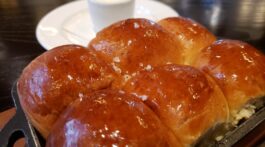




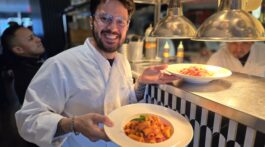

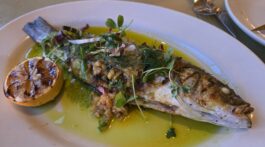
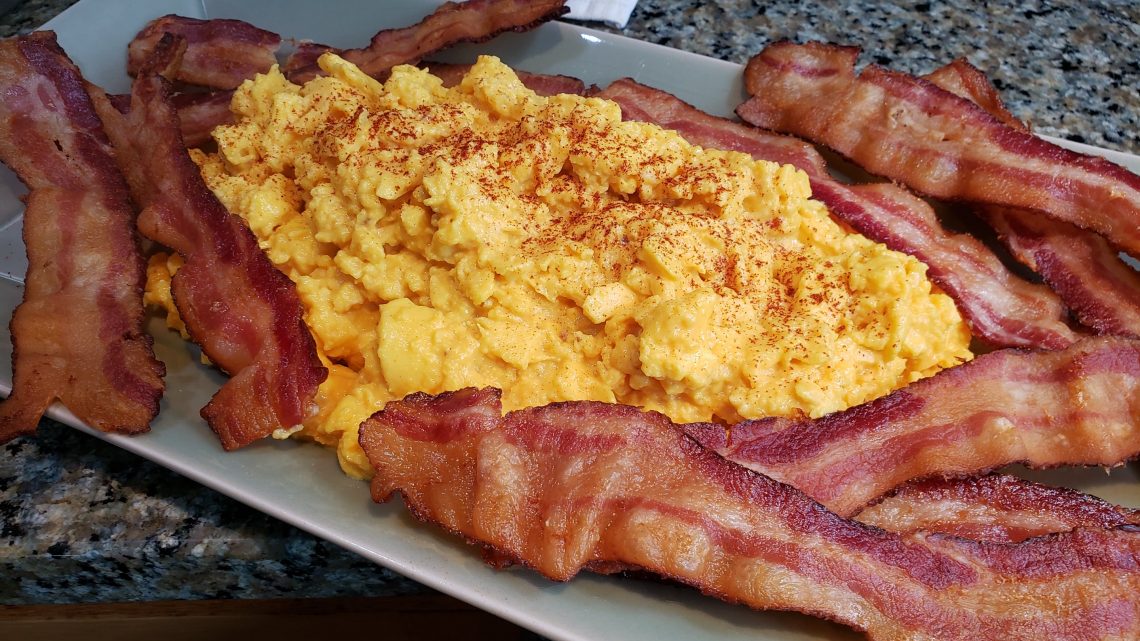

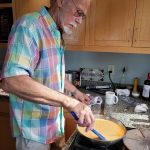





OMG, Frank, what shock and awe! We certainly never imagined being a feature on the Norwalk Hour. I’m actually speechless, a condition that Tony is fully appreciating at the moment. Seriously, we are so appreciative of your wonderful call-out of our b&b, complete with great photos. Now, with even more recognition of his EMP eggs (egg master of the planet) Tony will be hard to live with for a few days! Thank you so very much. We’re so looking forward to welcoming Charlotte and Cameron tomorrow. Hope the babysitting goes well and doesn’t totally exhaust you. Great to see you last Tuesday and, yes, the almond cake was irresistible!
Big hugs, Julie
Frank, much good advice to follow. I learned a lot I can put to use. Thank you.
Whitney